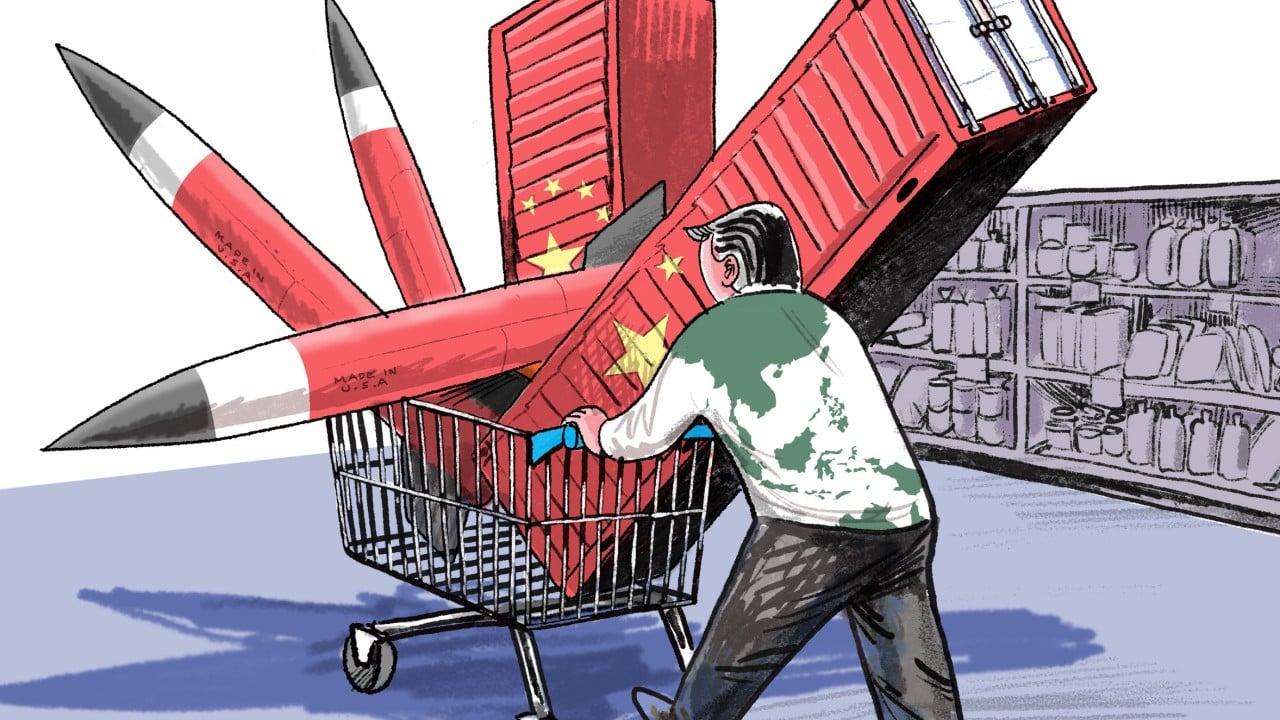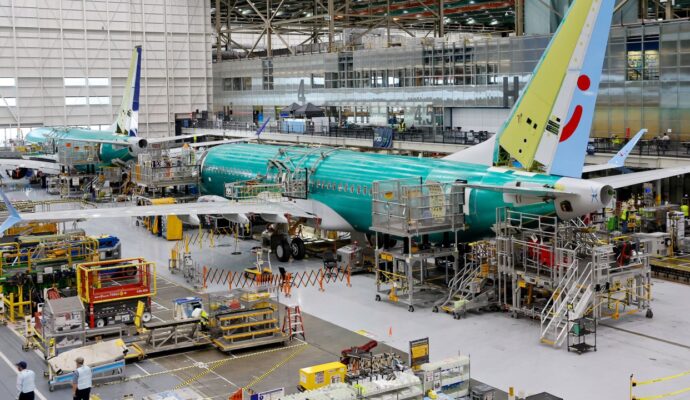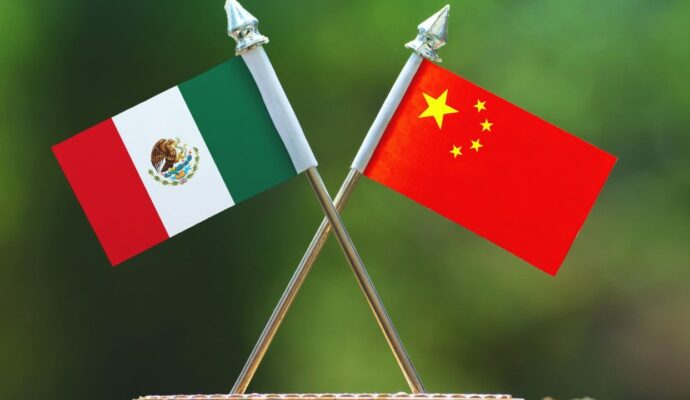
We can further get a sense of the dual-track nature of the US-China rivalry by looking to East Asia, with states similarly navigating both tracks to maximise their interests.
Last May, a senior US State Department official attempted to play up America’s trilateral relationship with South Korea and Japan “in the face of regional threats”, emphasising that it is “critical for shared security”. High-level trilateral meetings were held regularly throughout 2022, notably on the sidelines of the Nato summit (June), UN General Assembly (September) and the East Asia Summit (November).
From the left, South Korean President Yoon Suk-yeol, US President Joe Biden, and Japan’s Prime Minister Fumio Kishida meet during the Nato summit in Madrid on June 29, 2022. Photo: AP
To be sure, the greatest impetus of the trilateral relationship is to counter the rising military threat posed by North Korea. That being said, a statement by the US following the trilateral meeting in November also emphasised the trio’s strong opposition to unilateral attempts to change the status quo in contested waters of the Indo-Pacific, an ostensible reference to Beijing’s growing assertiveness.
China-Japan relations are plagued by wartime history and territorial disputes, while bilateral ties between China and South Korea were affected by Seoul’s decision to deploy a US anti-missile battery in late 2017.
Abandoning the more conciliatory approach of the previous government towards Beijing, Seoul’s new administration in 2022 pledged to strengthen security ties with Washington, and is keen to acquire more anti-missile batteries in the face of a rising military threat posed by North Korea. Beijing, however, views the deployment as undermining its “strategic security interest”.
In March 2022, the US proposed the “Chip 4” alliance with South Korea, Japan and Taiwan. While this initiative aims to enhance the supply chain resiliency of participants in the face of geopolitical uncertainties, it is also viewed as part of a wider strategy to hamper the development of China’s advanced semiconductor industry.
The pursuit of greater access to advanced semiconductors and stronger national security are intricately linked. A 2021 report by the US National Security Commission highlighted that cutting-edge semiconductors are needed to power the AI algorithms critical for military defence systems.
Yet, despite Washington’s attempt to shore up this technological alliance on national security grounds, there remains significant resistance at the company level, with rivals such as Samsung and TSMC reluctant to share technology with one another, as well as at the national level.
In August 2022, amid talk of the chip alliance, Beijing signed a memorandum of understanding with Seoul to boost cooperation in supply chain management and agreed to strengthen economic cooperation. One Chinese state newspaper noted that Seoul wanted to ensure ongoing mutual trust with Beijing before potentially joining the US-led alliance. This rationale highlights the track of US-China rivalry where China seemed to hold the edge.
Amid Washington’s calls to fortify US-led alliances in East Asia, Beijing’s economic relationship with Seoul and Tokyo has remained substantive. Since 2014, China has been South Korea’s largest trading partner. In 2021, trade with China represented 23.9 per cent of South Korea’s total trade versus 13.4 per cent with the US. China was also Japan’s top trading partner in 2021, with total trade amounting to US$350.3 billion, significantly larger than the US (US$216.7 billion).
Though neither country is an official partner to China’s belt and road, they are important players in the Regional Comprehensive Economic Partnership (RCEP) alongside China. The RCEP is particularly significant for the region as the first free-trade agreement to include three of the most advanced economies in Asia. Japan’s officials have said they expect the RCEP to boost its GDP by 2.7 per cent while creating some 570,000 jobs.
The three countries have since ratified the partnership, with China taking the lead. Beyond the RCEP, Beijing has attempted to push forward a trilateral free-trade agreement with both countries. However, these efforts remain fraught with difficulties as bilateral tensions between Seoul and Tokyo loom large.
Viewing the great power competition under two separate lenses does not mean the logic of security and economic development are independent of each other, nor that countries have to necessarily choose one over the other. Countries often have the space to navigate, quite successfully, on both tracks to maximise their interest.
Amid talks to strengthen US-led alliances in East Asia, South Korea and Japan continue to enjoy strong economic ties with China. As fault lines between China and the US deepen, however, it remains to be seen whether countries will be forced to prioritise one pillar over another.
Tiong Wei Jie graduated from the Master of Social Sciences (China and Global Governance) programme at the Nanyang Centre for Public Administration, Nanyang Technological University, and is currently a PhD student at the S. Rajaratnam School of International Studies, NTU

